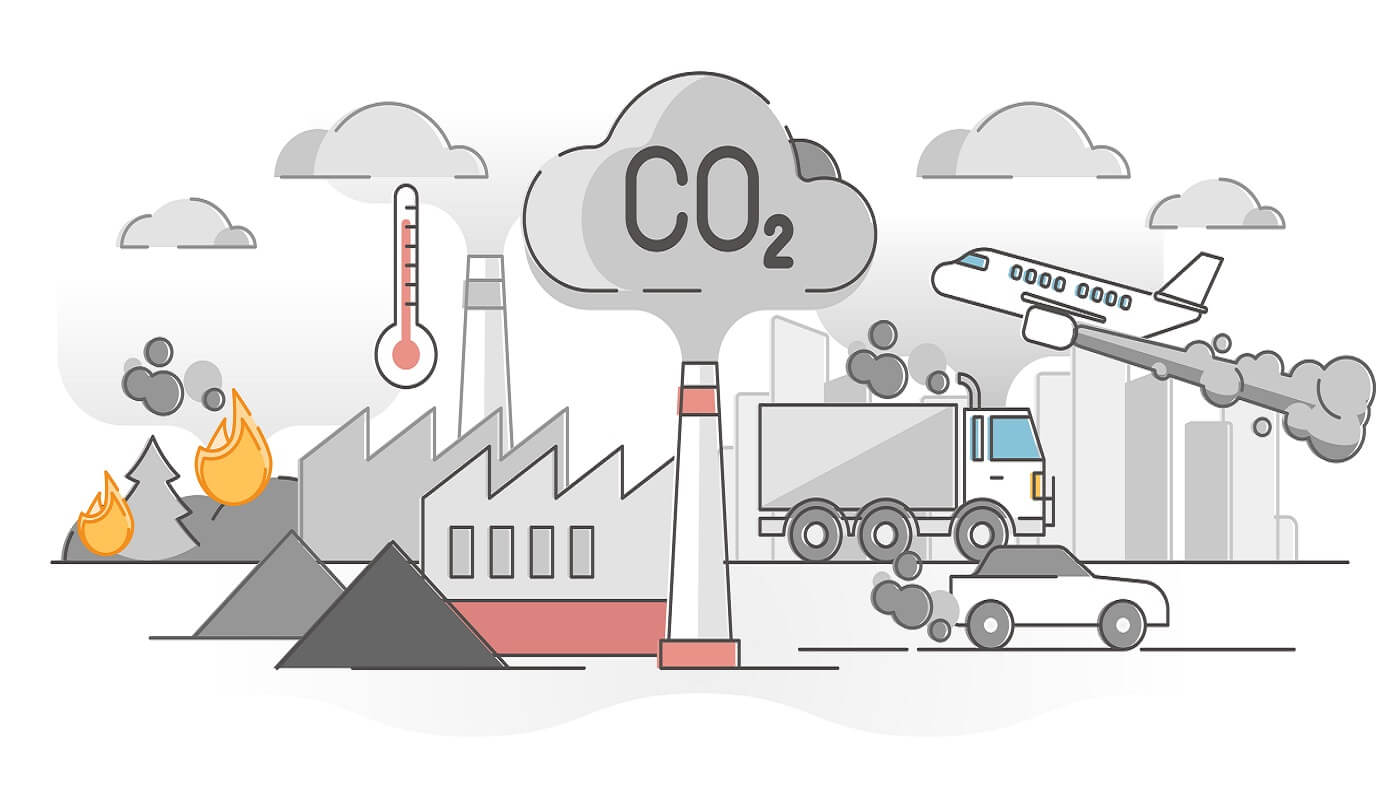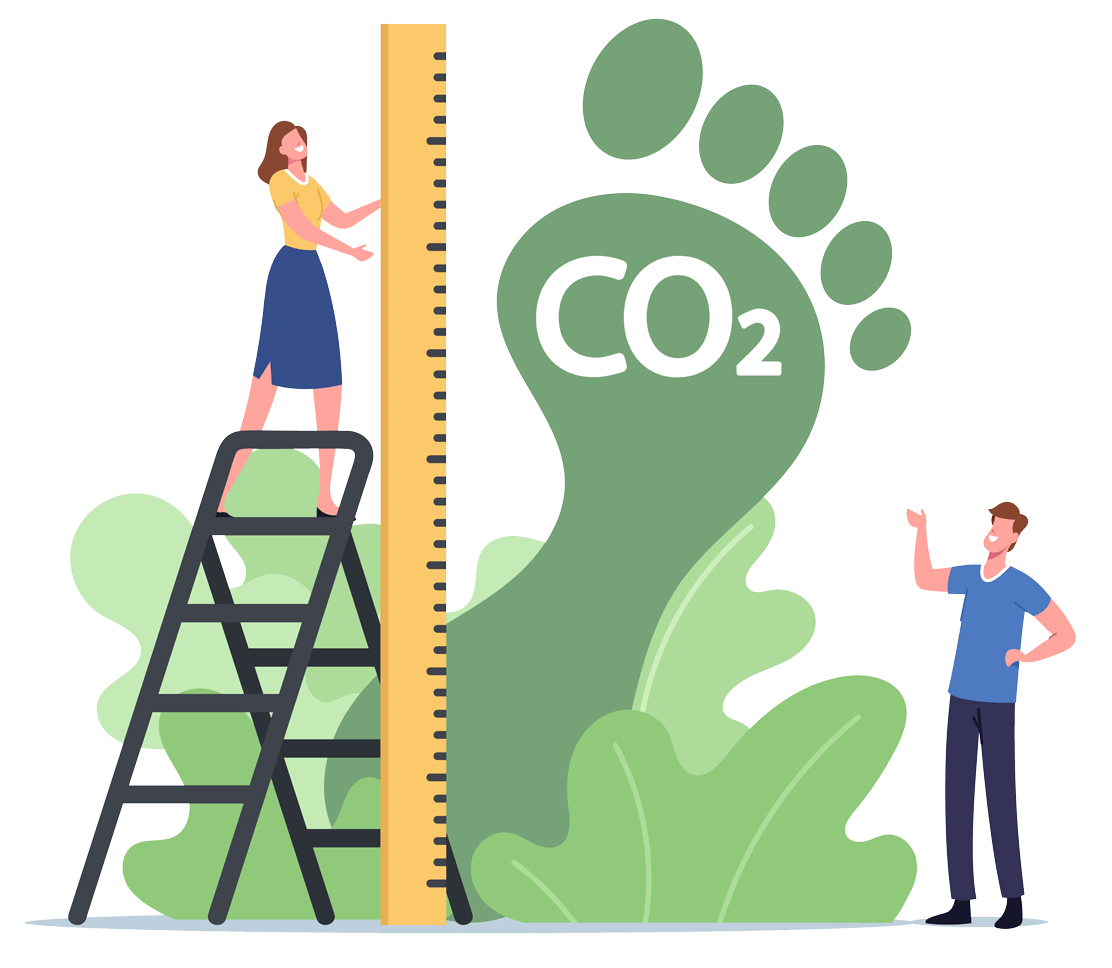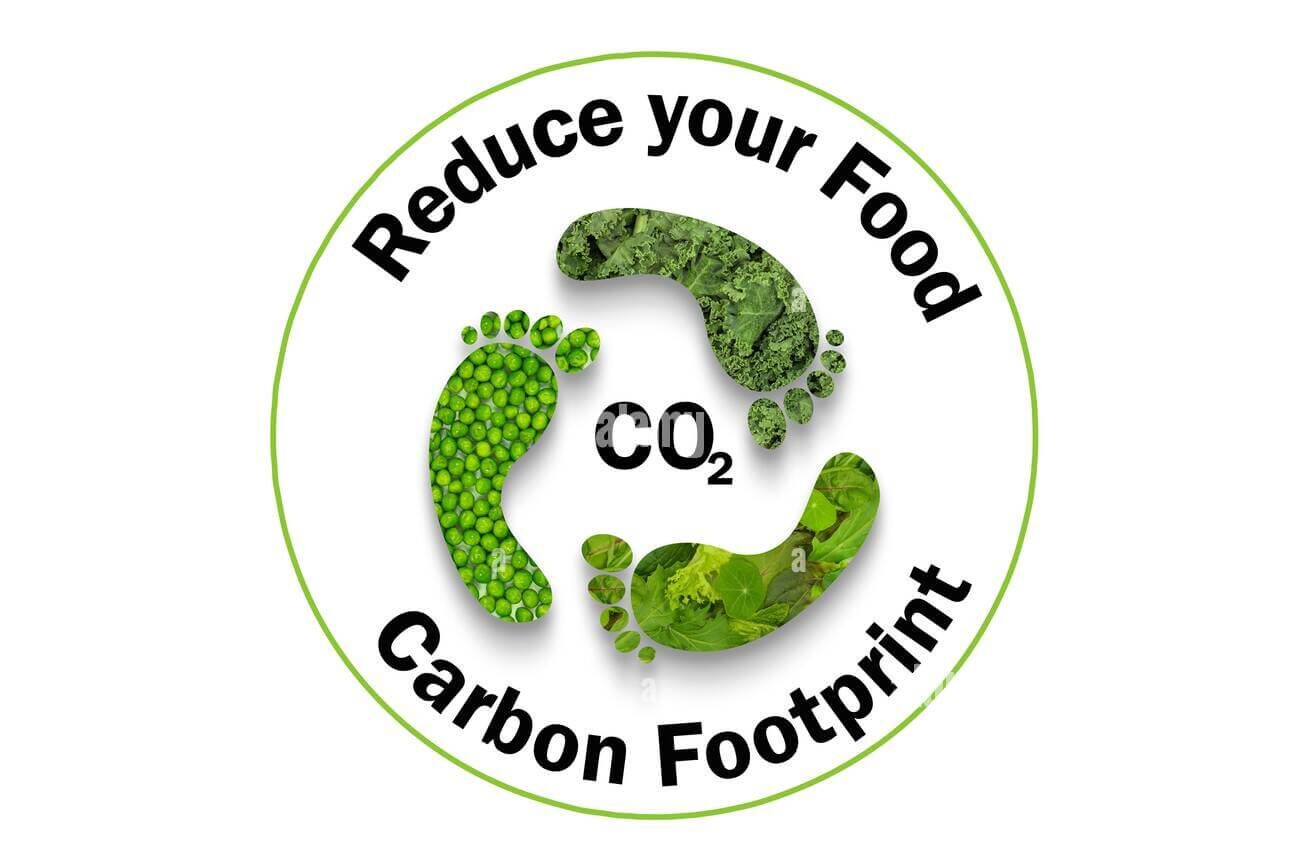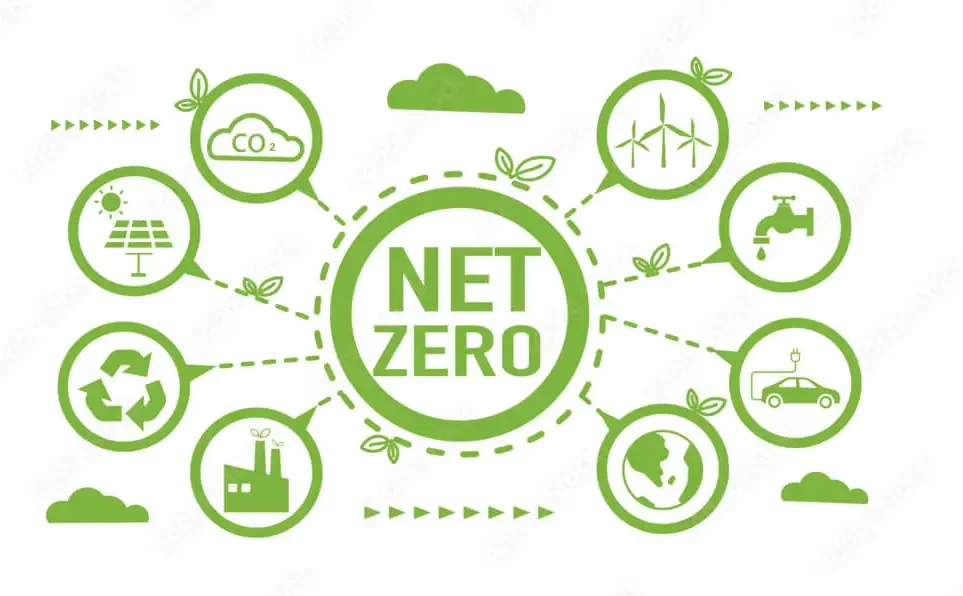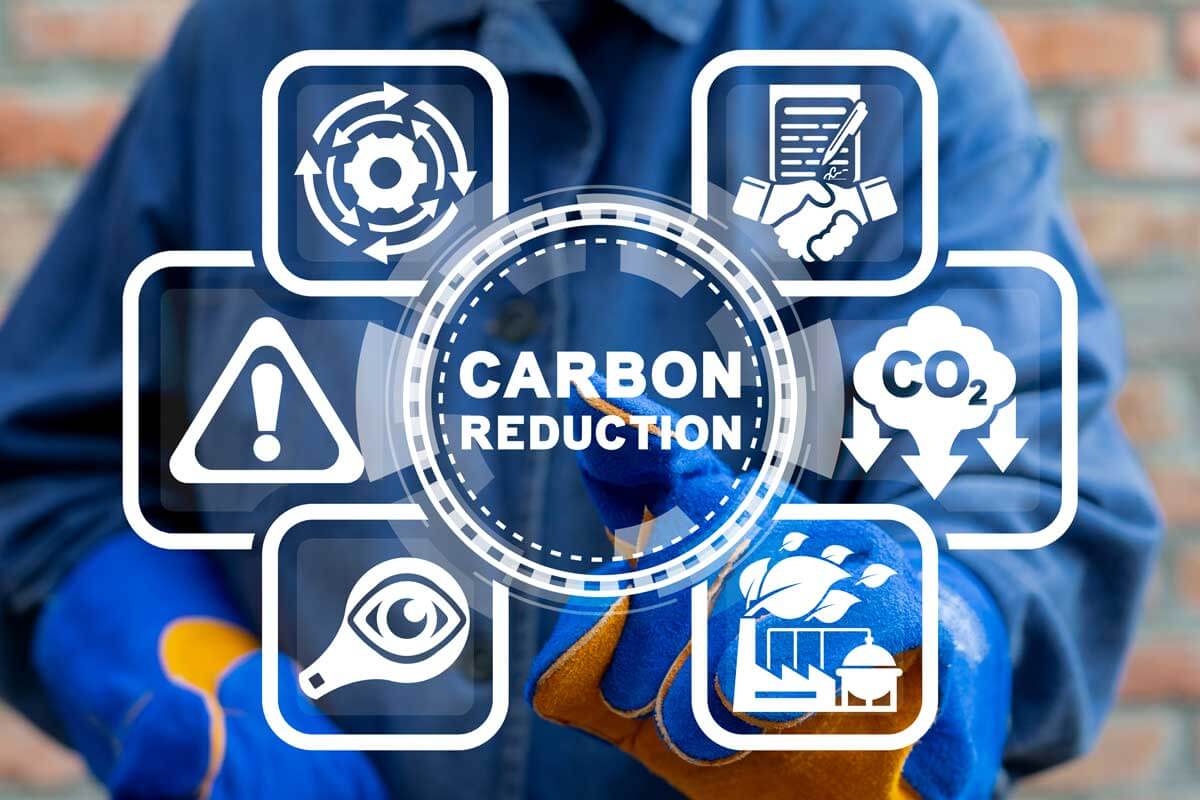
What causes carbon footprint
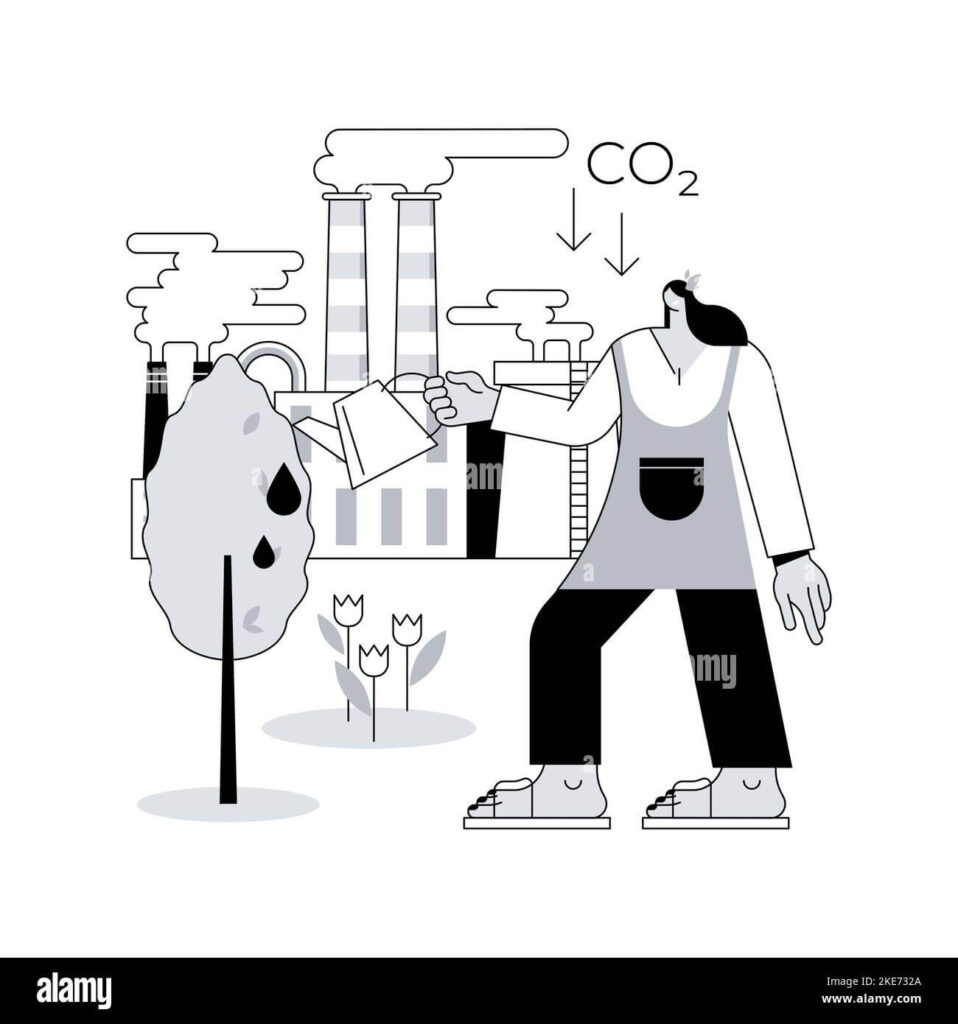
Have you ever wondered what factors contribute to the carbon footprint?
In this article you will learn about the causes of the carbon footprint as follows:
- We will begin by understanding the problem in its entirety, examining how our daily activities affect the environment and how this translates into a carbon footprint.
- We will address the upheaval that this issue generates, from climate change to ecosystem degradation.
- Finally, we will present you with practical and sustainable solutions to reduce your carbon footprint.
What causes carbon footprints?
- Burning fossil fuels for electricity, heat, and transportation.
- Significant contribution of the transportation sector.
- Greenhouse gas emissions from manufacturing, construction, and industrial activities.
- Energy consumption and emissions from residential and commercial buildings.
- Contribution of agriculture and deforestation.
Factors affecting carbon footprints
- Impact of energy consumption and strategies for reducing it.
- Carbon emissions associated with different modes of transportation.
- Greenhouse gas emissions associated with food production and consumption.
- Emissions from the manufacturing, packaging, and disposal of consumer goods.
Strategies to reduce carbon footprints
- Energy efficiency in homes and workplaces.
- Sustainable transportation options like public transportation and active transportation.
- Adoption of renewable energy sources like solar and wind power.
- Promotion of sustainable food choices, such as plant-based diets and local sourcing.
- Waste management practices like recycling and composting.
- Forest protection and carbon sequestration through reforestation and conservation efforts.
Causes of Carbon Footprints:
At the heart of understanding carbon footprints lies the recognition of the various activities that contribute to greenhouse gas emissions.
Let’s explore some of the primary causes in detail.
Fossil Fuel Consumption:
- Burning Fossil Fuels: Burning fossil fuels such as:
-Coal
-Oil
-Natural gas
These fuels are extensively used for electricity generation, heating, and transportation.
According to the United States Environmental Protection Agency (EPA), the largest source of greenhouse gas emissions from human activities in the United States is the burning of fossil fuels for electricity, heat, and transportation.
To address this issue, transitioning to renewable energy sources and improving energy efficiency are crucial steps. - Sector-specific Contributions: Different sectors contribute to carbon footprints in distinct ways.
The electricity generation sector, for example, relies heavily on fossil fuel combustion, making it a significant contributor to greenhouse gas emissions. Similarly, the transportation sector plays a vital role, particularly in terms of emissions from cars, trucks, planes, and ships.
Transportation Sector:
- Impact of Transportation Emissions: The transportation sector is a major contributor to carbon footprints, accounting for a significant portion of global greenhouse gas emissions.
The EPA emphasizes the need to reduce emissions from transportation, including the burning of fossil fuels, which releases CO2 into the atmosphere.
To address this, it is essential to explore sustainable transportation alternatives and improve fuel efficiency. - Modes of Transportation: Cars and trucks, for instance, are major contributors due to their reliance on fossil fuels.
On the other hand, planes and ships, while efficient for long-distance travel and shipping, also produce significant emissions.
Exploring alternatives such as electric vehicles, public transportation, and active transportation like walking and biking can help reduce carbon footprints.
Industrial Processes:
- Emissions from Manufacturing and Construction: Industrial activities, including manufacturing and construction, contribute to carbon footprints through the release of greenhouse gasses.
These emissions result from various processes, such as the production of goods, the use of raw materials, and the operation of machinery. Implementing cleaner production methods and adopting sustainable practices can help reduce the carbon impact of these processes.
Residential and Commercial Buildings:
- Energy Consumption in Buildings: Residential and commercial buildings account for a significant portion of global energy consumption and greenhouse gas emissions.
Heating, cooling, and electricity use in buildings contribute to carbon footprints.
To reduce these emissions, improving energy efficiency through insulation, efficient appliances, and smart energy management systems is crucial.
Agriculture and Deforestation:
- Impact of Agriculture: The agricultural sector is a significant contributor to carbon footprints.
Emissions arise from activities such as livestock management, crop production, and changes in land use.
According to the Center for Sustainable Systems at the University of Michigan, food production and transportation are major contributors to carbon footprints, with meat products having a larger impact than grains or vegetables.
By implementing sustainable agricultural practices, reducing food waste, and promoting plant-based diets, we can mitigate the carbon impact of the agriculture sector. - Deforestation and Land Use: Deforestation and changes in land use also contribute to carbon footprints.
Trees play a vital role in sequestering carbon dioxide from the atmosphere. When forests are cleared for agriculture, urban development, or other purposes, the stored carbon is released back into the atmosphere.
Protecting forests, implementing reforestation programs, and promoting sustainable land management practices are essential steps towards reducing carbon emissions.
Factor | Description |
Energy Consumption | – Electricity usage |
– Heating and cooling systems | |
Transportation Choices | – Modes of transportation |
– Fuel efficiency | |
Diet and Food Production | – Food-related emissions |
– Sustainable food choices | |
Consumer Goods and Services | – Carbon footprint of products |
Waste Management | – Recycling and composting |
– Single-use plastics | |
Reforestation and Conservation | – Forest protection |
– Carbon sequestration |
Factors Affecting Carbon Footprints:
Several factors influence the size of a carbon footprint.
By understanding these factors, individuals and organizations can identify areas where emissions can be reduced.
Let’s explore some of the key factors in detail.
Energy Consumption:
- Electricity Usage: Electricity consumption plays a significant role in carbon footprints.
The more electricity we consume, the more energy needs to be generated, often through the combustion of fossil fuels.
Reducing energy consumption through efficient appliances, turning off lights and electronics when not in use, and adopting energy-saving. - Heating and Cooling Systems: Heating and cooling systems in residential and commercial buildings are often powered by fossil fuels or electricity generated from fossil fuels.
Opting for energy-efficient systems, insulation, and weatherization measures can significantly reduce carbon emissions associated with heating and cooling.
Transportation Choices:
- Modes of Transportation: The choice of transportation mode has a direct impact on carbon footprints.
Cars and trucks powered by internal combustion engines emit significant amounts of CO2 when burning fossil fuels.
-Public transportation systems
-Walking, biking
-Electric vehicles offer more sustainable alternatives - Fuel Efficiency: Improving fuel efficiency is another crucial aspect of reducing carbon footprints in the transportation sector.
Transitioning to hybrid or electric vehicles, optimizing vehicle maintenance, and adopting fuel-efficient driving practices can help minimize emissions.
Diet and Food Production:
- Food-Related Emissions: Food production, transportation, and land use contribute to carbon footprints.
According to Energy Education, transportation of foods, pesticide use, and purchasing food out of season also contribute to carbon footprints.
Animal agriculture, particularly beef and dairy production, has a significant carbon impact.
By adopting plant-based diets, reducing meat and dairy consumption, and choosing locally sourced foods, individuals can reduce their carbon footprints. - Sustainable Food Choices: Making sustainable food choices involves considering the environmental impact of our dietary habits.
Eating locally grown, seasonal foods reduces the carbon emissions associated with long-distance transportation.
Additionally, reducing food waste and composting organic waste can minimize the carbon impact of our food consumption.
Consumer Goods and Services:
- Carbon Footprint of Products: The manufacturing, packaging, and disposal of consumer goods contribute to carbon footprints.
By opting for products with lower carbon footprints, recycling, reusing, and reducing waste, individuals can support a circular economy and minimize their carbon impact.
Waste Management:
- Recycling and Composting: Implementing proper waste management practices is vital for reducing carbon footprints.
Recycling materials instead of sending them to landfills helps conserve energy and reduces the need for new raw materials.
Composting organic waste also helps divert it from landfills and allows for the production of nutrient-rich soil amendments. - Single-Use Plastics: The proliferation of single-use plastics has become a significant environmental concern.
By reducing the consumption of disposable plastic products and opting for reusable alternatives, we can reduce the carbon impact associated with plastic production and disposal.
Reforestation and Conservation:
- Forest Protection: Forests play a crucial role in mitigating climate change by sequestering carbon dioxide.
Protecting existing forests and preventing deforestation are essential steps in reducing carbon footprints. - Carbon Sequestration: Afforestation (the establishment of new forests) and reforestation (the renewal of existing forests) can actively sequester carbon dioxide from the atmosphere.
These practices help offset carbon emissions and contribute to the overall reduction of carbon footprints.
Strategies to Reduce Carbon Footprints:
Reducing carbon footprints requires a collective effort from individuals, organizations, and governments.
Here are some effective strategies that can help mitigate carbon emissions and build a sustainable future:
- Transition to renewable energy sources such as solar, wind, and hydropower.
- Improve energy efficiency in buildings through insulation, efficient appliances, and smart energy management systems.
- Promote sustainable transportation alternatives like electric vehicles, public transportation, walking, and biking.
- Implement sustainable agricultural practices, reduce food waste, and promote plant-based diets.
- Protect existing forests, implement reforestation programs, and practice sustainable land management.
- Support a circular economy by opting for products with lower carbon footprints, recycling, reusing, and reducing waste.
- Implement proper waste management practices, including recycling and composting.
- Reduce the consumption of single-use plastics and opt for reusable alternatives.
Conclusion
Causes of the carbon footprint:
- Burning fossil fuels for electricity, heating and transportation is the main source of greenhouse gas emissions.
- Sectors such as electricity generation and transportation play a crucial role in the carbon footprint.
- Agriculture and deforestation also contribute significantly to emissions.
Factors affecting the carbon footprint:
- Energy consumption, both electrical and in heating and cooling systems, is a key factor.
- Choice of transportation modes and fuel efficiency influence emissions.
- Food choices and food production have a major impact.
- Consumption of goods and services, along with waste management, also play a role.
Strategies to reduce carbon footprint:
- Transition to renewable energy sources such as solar, wind and hydroelectric.
- Improving energy efficiency in buildings.
- Promoting sustainable transportation alternatives.
- Adoption of sustainable agricultural practices and plant-based diets.
- Forest protection and reforestation.
- Support for a circular economy and proper waste management.
Importance of energy efficiency in homes and workplaces to reduce carbon footprint.
Focus on sustainable transportation options, such as electric vehicles and public transportation, as a means to reduce emissions from the transportation sector.
Promotion of sustainable food choices, responsible waste management and forest conservation as essential measures to reduce the carbon footprint and contribute to climate change mitigation.
Common Questions
What is a carbon footprint and who is responsible for it?
A carbon footprint measures greenhouse gas emissions from individuals, companies, and activities.
What are the main contributors to carbon footprints?
Carbon footprints are primarily caused by burning fossil fuels and deforestation.
How can individuals reduce their carbon footprint?
By conserving energy, using public transportation, and choosing sustainable products.
Who can help businesses reduce their carbon footprint?
Environmental consultants provide expertise and strategies for carbon footprint reduction.
What are the objections to reducing carbon footprints?
Some argue it’s expensive, inconvenient, or won’t make a significant impact.
How can we overcome objections to carbon footprint reduction?
By highlighting long-term cost savings, health benefits, and the collective impact of individual actions.
What causes carbon footprint? From everyday activities to industrial impacts, learn how to mitigate your environmental footprint effectively."
Understand carbon footprint units like CO2e and kilograms to measure and reduce your environmental impact effectively.
Explore the different carbon footprint types—direct, indirect, embodied, and product—and learn strategies to reduce your environmental impact effectively.
Learn how to reduce your personal carbon footprint with practical strategies on energy, transportation, diet, and waste. Make a sustainable impact today.
Discover practical tips on reducing your water carbon footprint. Learn about water-saving strategies and their impact on climate change in this enlightening guide.
Offset your carbon footprint effectively with expert guidance. Understand the impact of your daily activities on emissions, calculate your footprint accurately, and support reputable offset projects.
Learn practical ways to reduce your carbon footprint & fight climate change. From energy conservation to sustainable transportation & eco-friendly diets, take steps for a greener future!
The secrets of reducing your carbon footprint in products. Learn the importance, calculation methods, and actionable strategies for a sustainable future. Dive in now!
Sustainable strategies to shrink your carbon footprint. Learn eco-friendly practices for a greener lifestyle. Act now for a better world!
Ecuador's Zero Carbon Programme is a testament to the country's commitment to sustainability, setting a global example. This guide highlights the program's strategies, benefits, and how businesses can align with these green initiatives.
Discover the importance of Carbon Reporting in our analysis of Carbon accounting. Learn how to communicate your sustainability efforts clearly and transparently. Read more
Global Net Zero Programs leading the charge towards sustainability. From Latin America's innovative policies to the EU's Green Deal, this guide illuminates the path to a greener future for businesses, policymakers, and individuals.


